Trends Globally - Impact for Property Investors
05-19-2018
 PropertyInvesting.net team
PropertyInvesting.net team
Just a reminder that anyone who wishes to Opt out of receiving this bi-monthly Newsletter should go to the button at the bottom and press Opt Out we always have this button on the bottom of our Newsletters (just to advise that all people receiving this Newsletter have signed up previously via the website www.propertyinvesting.net - no one has been added without consent.
High Oil Prices, Inflation, Debt Control and House Prices
This Newsletter describes the current global economic situation and trends that impact property investors through interest rates and inflation.
Another Crisis Developing: The world is heading for another financial-economic crisis as the money printing period of 2008 to 2015 starts to play catch up and interest rates rise. We are now starting to see things unfold. What we will do in this Newsletter is describe these trends and how they will affect the UK based property investor as well as those operating internationally.
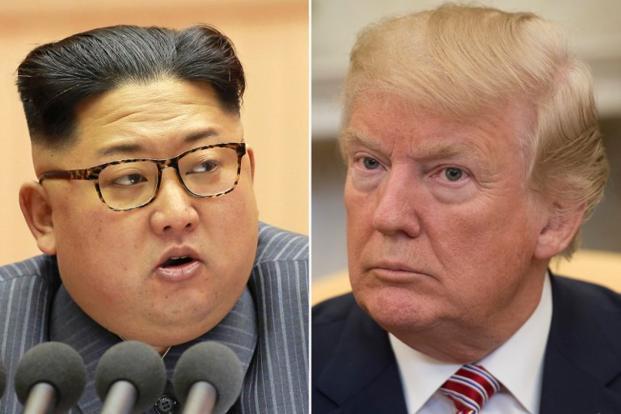
Blame Trump and Brexit! Firstly, everyone wants to blame everything on Trump and Brexit this aspect wont go away any time soon. But its key that one remains economically objective and focus on the fundamental trends that are driving the economy and property investment, which we will attempt to do now, rather than judging and blaming.
Gold Standard: Looking back in history, the US came off the gold standard when Nixon was at war with Vietnam in the early 1970s and needed to pay for a boost in military spending from currency printed out of thin air. During the Reagan years interest rates were hiked to stamp out inflation which lead to big increase in unemployment 1981-1983. Gold prices spiked to >$300/ounce and silver $55/ounce back then as people panicked. A boom commenced late 1980s as more efficient economic practices in the UK and USA started to bear fruit as more efficient use of capital started and markets were liberalised. This started a giant 40 years bond market bubble that built from 1981 through to 2016. The financial crisis of 2008 was a result of low interest rates, easy lending and excesses after the reaction to the 9/11 booming in to 2002 which drove both a commodities and financial bubble especially off the back of Chinas gigantic growth spurt from 2000 to 2008 at 10% a year.
Massive Currency Printing: The Fed under Bernanke then Yellen commenced a gigantic multi-trillion dollar currency printing mission that expanded the money supply and US debt five-fold during the Obama years a complete disaster. The mis-guided Keynesian economic model. This lead to inefficient allocation of capital higher unemployment weak GDP growth and exporting of inflation all around the world. Much of this dollar and Euro currency went into property in the key international cities like New York, London, Amsterdam, Singapore, Paris, Geneva parked by the super-rich elite. This created bubbles. Trump got into power off the back of the US closing its manufacturing (heavy industry) and allowing the Chinese to capture the market with massive oil and goods imports that created a huge balance of payments deficit during the Obama years.
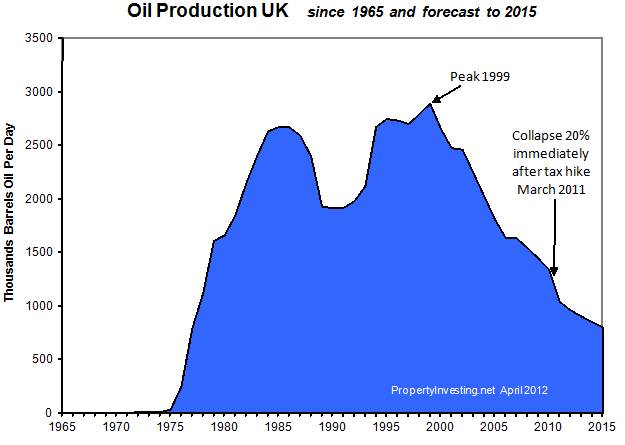
Saved by Oil Shale: Fortunately for Obama the Oil Shale boom in production (and shale gas) helped save the day economically otherwise the US would probably not have got out of the 2008 economic crisis-mess the dollar could have crashed at that point. Instead oil imports started dropping 2010 after light oil was found in the expanding shale gas production post 2008 which accelerated through to mid 2014 then again recently as oil prices recovered from their lows Jan 2016 and Trump has tried to boost US manufacturing buy bullying companies and giving tax breaks. It seems to be working in that US unemployment is dropping as one would expect from a right wing government that is focussed on creating jobs in industry rather than the public sector.
Inflation: Globally as inflation has started to rear its ugly head from all the printed currencies and Central Bank mis-management interest rates have risen. This is particularly true in the developing economies around the world with weak currencies and high oil import costs.
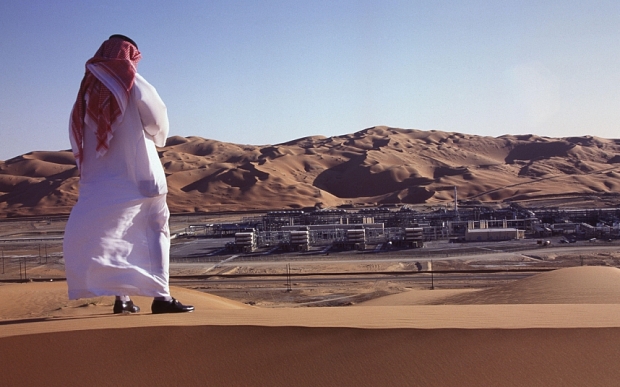 OPEC: Meanwhile OPEC has tighten the oil supply to drive up oil prices from $28/bbl in early 2016 to $80/bbl today into danger territory. The bulls have got hold of the oil commodity market they are in control - and are driving prices high expect them to go higher before crashing again.
OPEC: Meanwhile OPEC has tighten the oil supply to drive up oil prices from $28/bbl in early 2016 to $80/bbl today into danger territory. The bulls have got hold of the oil commodity market they are in control - and are driving prices high expect them to go higher before crashing again.
Oil Imports A Disaster for 2019: As we have written about many times before, all countries with no oil production and huge oil import costs or high oil intensity per GDP capita produced will suffer hugely from the increasing oil prices. The benign high growth days for these countries are over there will be winners and losers and we will name some of them now.
Tipping Points: Oil creates economic tipping points because everyone knows that countries that cannot afford their oil import costs will see their currencies weaken, then their interest rates have to go up to protect their currencies then many of their national companies start to go bankrupt and the government finances suffer as debt national payment rise sharply. Its a vicious circle. If interet rates rise, people prefer to put their money into the dollar (for now anyway) and runs on the currencies of weak developing countries start like being seen now in Argentina, Venezuela and Iran.
The countries with the weakest economies, highest oil import bills and highest government debts and annual deficits will fare the worst in the next year. Lets name some of them:

Developed Countries
Greece
Italy
Spain
Belgium
Hungary, Romania
Developing Economies
Turkey
Argentina
Venezuela (lower oil exports)
Syria
Lebanon
Tunisia
South Africa
Other countries with strong growth prospects but high oil import costs that will see slowing economies because of the high oil prices are India, Pakistan, Bangladesh and possibly China.
The oil price is being driven up by a combination or reasons:
Perception that US shale oil production increases will not be enough to prevent the market continuing to tighten
OPEC taking around 1.6 million bbls/day off the market around 150% OPEC cut  compliance the largest ever
compliance the largest ever
Russia joining in the OPEC cuts for the first time ever
Expectation that the OPEC cuts will continue when they next meet in June
Saudi IPO of Aramco the Saudis need high oil prices to maximise the sale value end 2018 to early 2019 and want at least $80 also to pay for Vision 2030 Crown Prince Salmons project
All the hype about electric car growth in 2017 was way overdone and people now realise that only a few developed nations are interested in rapid take-up
Car just keep getting bigger in the US only 25% of new cars are actually normal cars the rest are trucks, vans, cross-overs or SUVs the gas guzzling never stops.
Cars are getting bigger in all countries because: 1) they are a status symbol and make people feel powerful; 2) they are required as other cars getting biggest to be safe particularly transport children etc. The China love SUVs just like the Brits. The whole worlds seems to love huge cars and we cant see this changing this is boosting oil demand.
Global political tensions are playing their part new sanctions on Iran (that could take 0.5 to max 1 million bbls off the market). 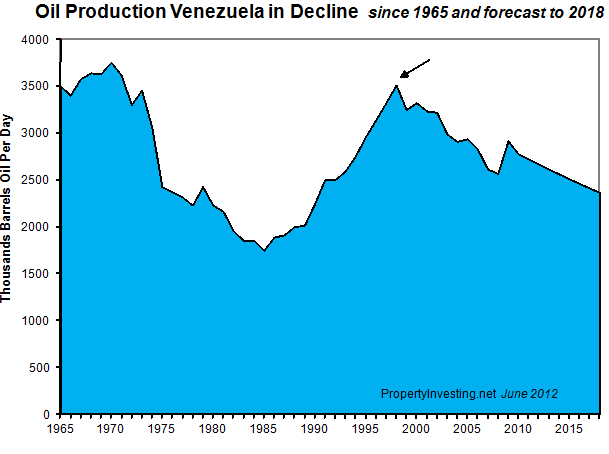
Venezuela Sanctions: We expect new sanctions against Venezuela by early June as a protest to Mundos snap re-election scam in the form of making it illegal to sell oil to Venezuela this would curtail their oil production since they need light crude as diluent to mix with their heavy crude to allow it to be produced. Venezuelas crude oil production starts its decline the year Chavez too over in 1999 and its now collapsing after the government nationalise PDVSA and installed the military to run the company.
Underinvestment: Years of massive under-investment in the oil business after the crash of Aug 2014 through to mid 2018 (four years) is taking its toll and almost no new oil projects are coming on-stream by end 2018 with next one 4 years away (the normal cycle time for an oil development is 4-6 years from investment decision to first oil).
Oil Heading Higher: The message is hold onto your chairs because oil looks like its heading even higher and this will feed through into inflation and could create recessions in the de veloped world with the weaker developing economies that have not oil production tanking.
veloped world with the weaker developing economies that have not oil production tanking.
As oil prices rise flashing warning lights go out on the countries mentioned above.
The UK is also exposed though we produce around 60% of our oil needs and 50% of our gas needs so are at least partially headed. However, the higher oil prices will definitely start feeding through into inflation in the next few months so by end 2018 we expect over 3% inflation again.
The high oil prices will also slow relatively strong economies like Holland, Germany, Sweden, France and South Korea.
Oil Exporters: The high oil prices are likely to benefit these countries the most:
Canada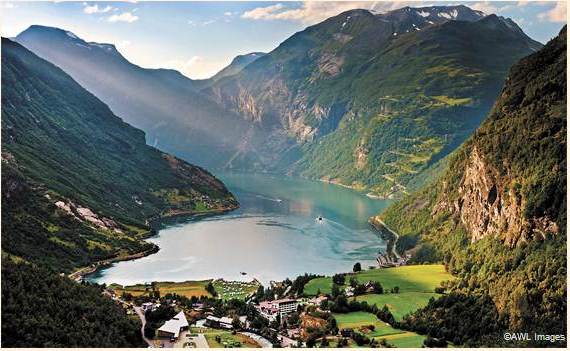
USA
Norway
Russia
Saudi Arabia
UAE
Qatar
Australia
Brunei
Kuwait
Iraq
Iraq Worth a Note: We expect out of all the unstable countries in the world Iraq looks like its finances will massively improve in the next year and if their political-security stability improves things could transform quite rapidly now that ISIS is all but defeated. The Bagdad central government in Oct 2017 took the giant Kurkuk field back into its control BP will be redeveloping this field almost 100 years since they first discovered it in 1920 - which will further help the Iraqi central finances.
Canada and Norway The Oil Elite Countries: For the stable countries that will see the biggest benefits then Canada and Norway shine out. We expect the Norway Kronor to strengthen and Oslo property prices to rise sharply in the next few years. We also expect Canada to start to boom off the back of heavy oil and gas projects.
USA: The USA can easily handle higher oil prices now that they produce so much of their own oil. Indeed, we think high oil prices could actually help the US because so  many jobs are created in places like Texas and Oklahoma other states that oil prices help are Louisiana, Alaska and North Dakota. Texas is the big winner though expect Houston house prices to boom in the next year. If you want to get into lucrative rentals then Midland in Texas is the place to be housing oil workers. Make no mistake the USA is rich in oil, gas, coal, nuclear, agriculture, tourism, finance, services, high tech and military it has practically everything to be self sufficient. Tump being President is somewhat of a side show for most Americans they are insulated from the rest of the world. As long as the dollar does not collapse, the USA should be okay. One of their biggest long term threats though is China, Russia and other countries turning their back on the mighty dollar so expect problems if the dollar continues to decline like it has done in the last 1-2 years since Trump got into power.
many jobs are created in places like Texas and Oklahoma other states that oil prices help are Louisiana, Alaska and North Dakota. Texas is the big winner though expect Houston house prices to boom in the next year. If you want to get into lucrative rentals then Midland in Texas is the place to be housing oil workers. Make no mistake the USA is rich in oil, gas, coal, nuclear, agriculture, tourism, finance, services, high tech and military it has practically everything to be self sufficient. Tump being President is somewhat of a side show for most Americans they are insulated from the rest of the world. As long as the dollar does not collapse, the USA should be okay. One of their biggest long term threats though is China, Russia and other countries turning their back on the mighty dollar so expect problems if the dollar continues to decline like it has done in the last 1-2 years since Trump got into power.
Oil Imports: As a general rule, in all countries that are heavily reliant on oil imports during periods of high oil prices like the times just beginning this month inflation rises, growth drops and house prices normally go down or stagnate. In oil exporting countries that have well managed economies house prices often rise sharply.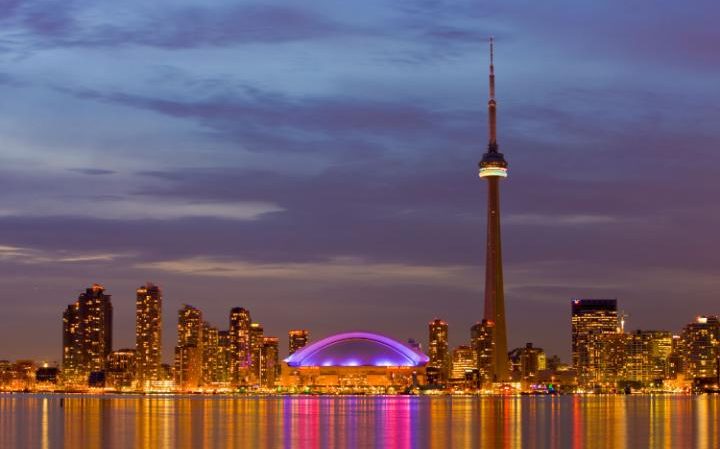
So our projection for the next year is
Improving House Prices
Canada, USA, Norway, Russia, Saudi Arabia, UAE, Qatar, Australia, Brunei, Kuwait, Iraq
Deteriorating House Prices developed countries
Greece, Italy, Spain, Belgium, Hungary, Romania
Deteriorating House Prices - Developing Economies
Turkey, Argentina, Venezuela, Syria, Lebanon, Tunisia, South Africa
Italy is worth a special mention. Just when interest rates are rising and people were beginning to fret about their national debt, a coalition of the far left and far right have formed a new government 18 May 2018 and will be henceforth at loggerhead with the socio-liberal EU elite of Brussel this spells disaster economically for Italy and we think they may either leave voluntarily the Euro or even consider leaving the EU like the UK. The gigantic Italian Euro debt which is around 120% of GDP and rising could trigger another Euro crisis in the Mediterranean countries. Italy will be particularly hard hit by higher oil prices. Their economic efficiency is low, oil imports high, debt huge and growth low in part because of the very low fertility rate. Now an extreme left and right nationalist coalition is in charge this is likely to be very bad news for the Italian economy it could go the way Greece went about four years ago. Oil prices over $80/bbl just dont help.
UK Prospects: With regard to the UK because we have a centre-right government trying to manage the  economy and finances effectively then the Pound Sterling should retain some strength as other countries start to get into turmoil. It feels like the UK is on the slow train ever since Brexit hit the headlines and indeed the uncertainty and focus on Brexit has created a slow-down. But post March 2019 which is only around the corner now things could improve particularly if Italy gets into trouble and people prefer to invest in the UK compared to the broken EU zone model where undemocratically elected centralist bureaucrats are running the show from Brussels.
economy and finances effectively then the Pound Sterling should retain some strength as other countries start to get into turmoil. It feels like the UK is on the slow train ever since Brexit hit the headlines and indeed the uncertainty and focus on Brexit has created a slow-down. But post March 2019 which is only around the corner now things could improve particularly if Italy gets into trouble and people prefer to invest in the UK compared to the broken EU zone model where undemocratically elected centralist bureaucrats are running the show from Brussels.
London: One could argue the smart money is piling into the UK London taking advantage of suppressed London property prices during this period of high uncertainty from June 2016 to mid 2019.
.jpg)
Tory or Labour: The key as always will be whether Labour manage to get elected in the next Election scheduled latest May 2022. The Tories will have 2 straight years to create a boom and feel good factor before everyone decides. The positive news of the Tories has been Labours disappointing showing in the local council elections. If SNP continue to remain strong, and Labour weaken off the back off everyone getting bored of Corbyn then the Tories would stand a very good chance of retaining power May 2022 during a period that could see the UK booming off the back of new trade deals and a UK open for business global mentality. Early days, but Brexit looks less severe than most people envisaged and some key indicators like inward migration and employment numbers are heading in the direction many in the UK wanted. Just to flag we did not vote for a Brexit but we can certainly understand why people did and we also see upsides to it if it is properly managed. Make not mistake though if Corbyn gets into power there will be massive capital flight, currency crash, higher inflation, higher unemployment and a recession with a house price crash in London just to add insult to injury. It wo uld be an economic disaster.
uld be an economic disaster.
Just a reminder anyone thinking that Brexit still will not happen is deluded. Labour and Corbyn want Brexit as do 70% of Tories (the Tory party faithful) so its going to happen because a majority will vote for it. Yes there are many socio-liberal people shouting lots people like Tony Blair and David Miliband but it wont make any difference.
We hope this Newsletter has given you some interesting insights into the global economy, trends and the way things are heading. If you have any queries, please contact us on enquiries@propertyinvesting.net

